Question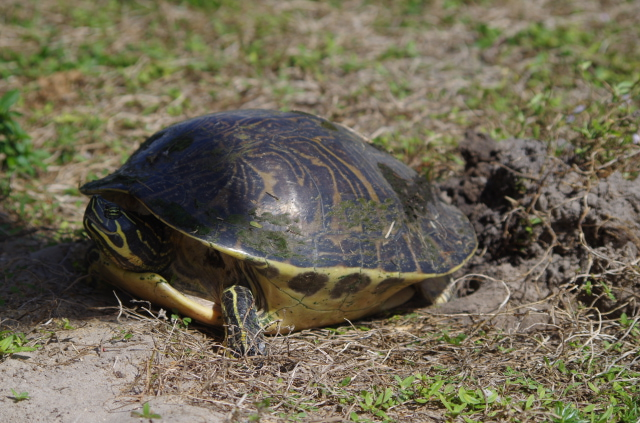 Peninsula Cooter
Peninsula Cooter
QUESTION: I have just witnessed a Peninsula Cooter Turtle lay her eggs, cover the nest and return to the canal behind our house here in Bonita Springs. It was a real thrill for this old nature lover. I have a couple of concerns now. The nest is directly in front of our shed door which is a high traffic area. I will gladly create detours around it and put up a barrier to keep others off of it. However, I vacate this home to head north for the summer end March early April and won't be around to protect it after that. Is there anything I can do to effectively protect the nest and provide escape route for the hatchlings when I am not here?
ANSWER: Hi Jim,
What a lucky thing to see! And big kudos to you for wanting to protect the eggs from harm. Cooter eggs will generally hatch in about 3 months, more or less, depending on temperature. So it sounds like you definitely won't be around for the last few weeks of the incubation period.
I'm a little unclear about the situation where the nest is. When you say "high traffic" in front of the shed door, what do you mean? Foot traffic, road, etc.? Is this your own property, or rented (will other people be moving in?). Will there be a way for the hatchlings to reach water safely without having to cross a road? Is there a likelihood of the nest being dug up by predators, dogs, etc.?
If I understand the situation a little better, I might be able to make some suggestions. It sounds like you want to create a way to direct the hatchlings to water, and you can probably do that if you're willing to create something with walls that will force the hatchlings to take the designated route. Turtles are pretty stubborn if they've set upon a certain direction, though, so it would have to be designed so that they can't choose another route--something like a plastic-lined channel, for example.
Could you please post back with more information, and possibly some pictures of the area so I can get a better idea of what you mean? Then maybe we can figure out something that will work.
---------- FOLLOW-UP ----------
QUESTION: First of all, I have come up with some solutions. However, these are details that I would welcome comment on. I have a home in a 55+ community in SW Florida. I am a snowbird and will head north around 7 April. (probably 3 to 5 weeks before the eggs hatch. There is a 20 foot wide canal about 150 feet from the back of my home with very few obstructions between the nest and the water. The mother turtle came up from the canal and returned to it after laying her eggs. She established her nest about 4 feet in front of our shed door. The traffic is foot traffic as we gain access to our shed with bicycles, golf cart and for laundry. With a little care and effort we can avoid putting any weight or walking on the nest. I have discussed the situation with a couple of permanent residents here in the community and they are willing to do their best to monitor the nest and steer the hatchlings toward the canal if necessary. They look forward to photographing the event. I now have a couple of oven racks placed over the nest and secured to the ground. Hopefully that will provide protection from most predators and still allow for the natural effects of mother natures heat and rain and still provide escape from the nest for the hatchlings if my guardian friends are not there at the magic moment. One predator of concern would be the armadillo that has a deep narrow reach into the ground. Can you explain the hatch for me to pass on to my friends. e.g. what will they see happening, Do the eggs hatch all at once or over a period of time. Will the hatchlings simply dig their way out of the ground? I think the eggs are 5 to 6 inches deep. I understand that mother nature takes her course but I feel a sense of responsibility now that I have witnessed the great effort of that turtle. thank you for your assitence. Jim Gordon
AnswerHi Jim,
I have a better idea now. It sounds like you have a decent amount of protection for them--it's really very difficult to keep determined predators 100% out, but with luck the nest will be fine.
Generally the incubation period will be 90-100 days, but that will fluctuate a bit with temperatures. Once a hatchling pips an egg, it can take 24 hours or longer to completely hatch, and the eggs may hatch over the course of a day or two, possibly longer. I did some research to try to find out if the hatchlings will all emerge together, but the only information I could find was on fall hatchlings that overwinter in the nest. My guess is that they probably will emerge together because it makes more sense from a survival standpoint. So around day 85 I would start checking the nest area a few times a day to see if there are any signs of disturbance. Once the hatchlings are out, they should be able to reach water, but it's OK to help if necessary. Just don't dig up any eggs, and don't help any hatchlings out of the shell. If a hatchling isn't strong enough to hatch out, it's probably too weak to survive anyway.
Good luck! Please post back if they get pictures. I'd love to see them!


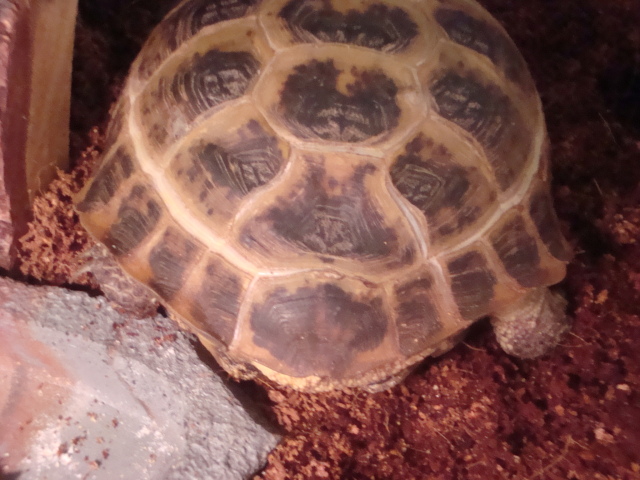 Russian Tortoise Shell Concerns
QuestionWalkers Shell
QUESTION: I have a male Ru
Russian Tortoise Shell Concerns
QuestionWalkers Shell
QUESTION: I have a male Ru
 they are so diffrent
Question
the habitat
I have 2 baby red eard sliders and
they are so diffrent
Question
the habitat
I have 2 baby red eard sliders and
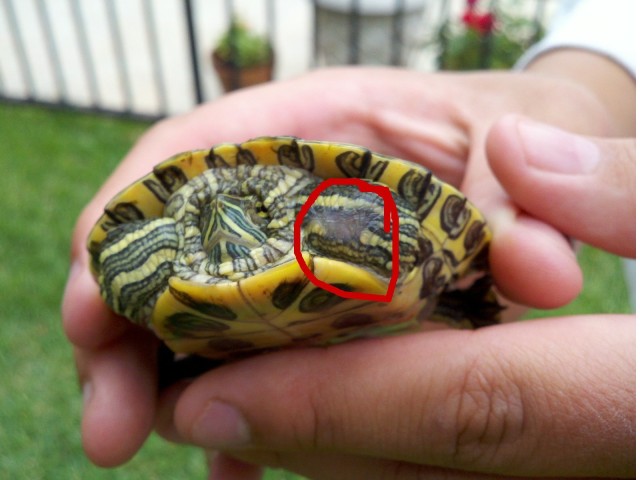 red slider turtle grey spot on arm/elbow
QuestionQUESTION: we have a five year old red slider th
red slider turtle grey spot on arm/elbow
QuestionQUESTION: we have a five year old red slider th
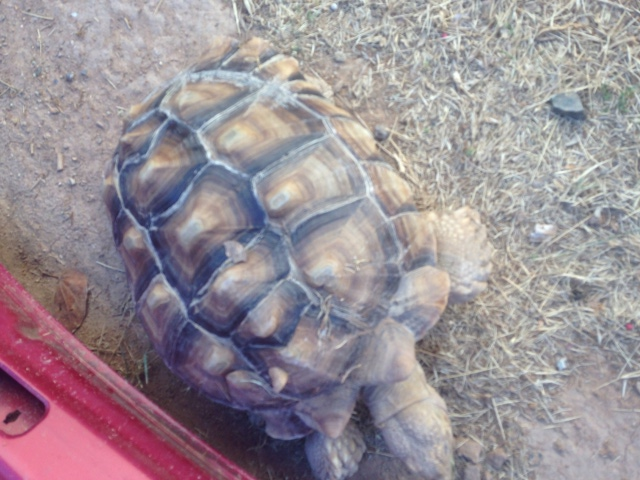 i need to know what kind of tortoise I have
Question
Tortoise
Im interested in buying a new
i need to know what kind of tortoise I have
Question
Tortoise
Im interested in buying a new
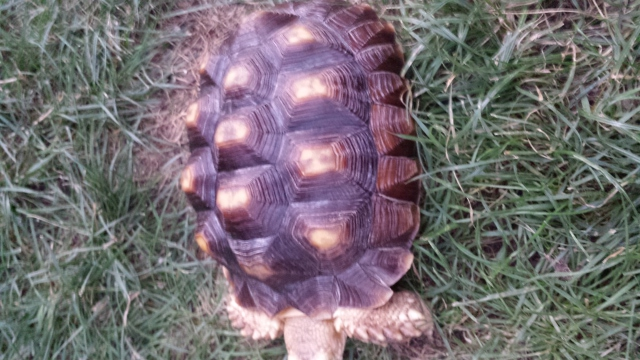 Tortoise identification
Question
Shell Belly
Hi,I think my tortois
Tortoise identification
Question
Shell Belly
Hi,I think my tortois